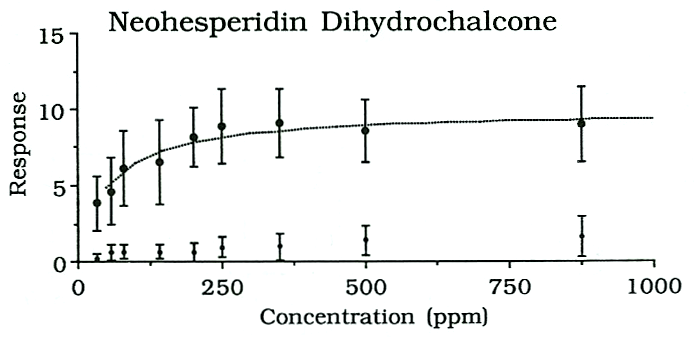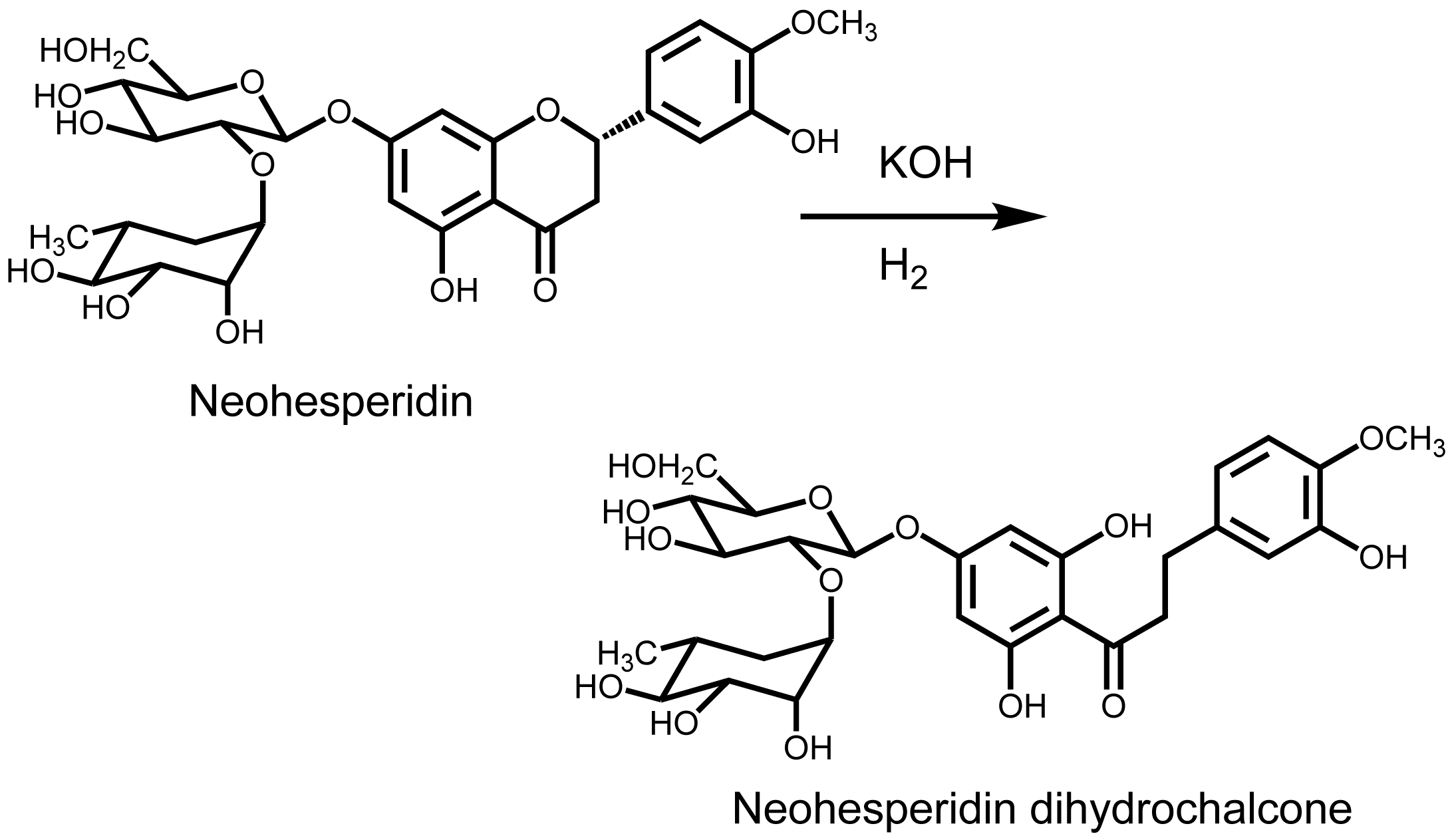Chemistry
Neohesperidin dihydrochalcone (Neo-DHC) is synthesized by chemical treatment of neohesperidin, a bitter component of bitter orange, grapefruit, and other citrus fruit peel and pulp. Although it is derived from a natural source, it has undergone chemical transformations, so it is not a natural product. Neo-DHC does not occur in nature.
Taste
Neohesperidin dihydrochalcone is up to 1000 times as sweet as sucrose, but it has a number of other properties that limit its use as a sweetener. First, it has an intense cooling effect on the tongue. Second, it has licorice-like and bitter off-tastes. Third, it is slow in onset and has a lingering taste that make it decidedly not sucrose-like.
The concentration vs. response relationship in water is shown below (results in food systems will vary). This graph is based on data from DuBois, Walters, Schiffman, Warwick, Booth, Pecore, Gibes, Carr & Brands in "Sweeteners: Discovery, Molecular Design, and Chemoreception," D.E. Walters et al., Eds., American Chemical Society, 1991. The units of R are percent sucrose equivalent; the units of C are parts per million (ppm).
Neohesperidin dihydrochalcone functions to mask bitter taste in citrus, and it can enhance the sweetness of other sweeteners. It has also been used to mask bitterness in pharmaceuticals.

